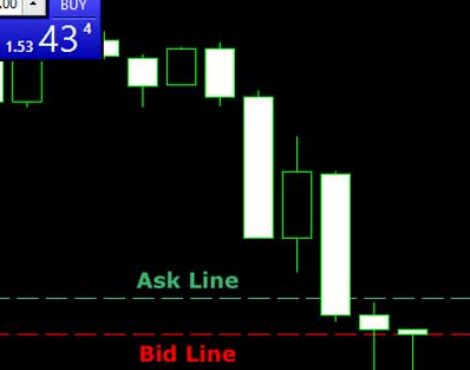The world of financial markets is known for its volatility, with prices constantly fluctuating and creating opportunities for traders. Two of the most popular markets in this realm, forex (foreign exchange) and crypto (cryptocurrency), are known for their particularly turbulent nature. Understanding the volatility of these markets is crucial for traders looking to capitalize on price swings and make informed decisions. In this article, we will delve into the differences and similarities between forex and crypto volatility, exploring the factors that drive these price swings and the strategies traders can employ to navigate the seas of volatility.
The Volatility Battle: Forex vs. Crypto Explained

Forex and crypto markets both exhibit high levels of volatility, but in different ways. Forex, being the largest financial market in the world, is influenced by several factors such as economic indicators, central bank policies, geopolitical events, and market sentiment. These factors can lead to significant price swings in currency pairs, creating ample trading opportunities for those who can accurately predict these movements. On the other hand, crypto markets, while also influenced by economic factors, are more prone to wild swings due to their relatively young and still developing nature. Factors such as regulatory news, technological advancements, market adoption, and even social media buzz can send cryptocurrency prices skyrocketing or plummeting within a short span of time.
Unraveling the Turbulent Nature of Forex and Crypto Markets

Volatility in both forex and crypto markets is a result of market participants’ reactions to various stimuli. In forex, economic indicators such as GDP growth, inflation rates, and interest rate decisions can lead to significant price fluctuations. Traders closely monitor these indicators and adjust their positions accordingly. In the crypto world, market sentiment and investor psychology play a crucial role in shaping price swings. News of regulatory crackdowns or major partnerships can trigger rapid price movements, often fueled by speculative buying or selling. The relatively low market capitalization of cryptocurrencies compared to traditional fiat currencies also amplifies their volatility.
Peering into the World of Forex Volatility: A Deep Dive

Forex volatility can vary depending on the currency pair being traded. Major currency pairs, such as EUR/USD or GBP/USD, tend to have relatively lower volatility compared to exotic pairs or emerging market currencies. Volatility can also vary based on the trading session, with the most active trading hours coinciding with the overlapping of major financial centers. Traders often use technical analysis tools and volatility indicators to gauge potential price movements in forex markets. Volatility can present both opportunities and risks, and it is essential for traders to have a solid understanding of the factors driving volatility in order to make informed trading decisions.
Decoding the Rollercoaster Ride of Crypto Market Volatility

Crypto market volatility is notorious for its extreme price swings, often referred to as “cryptocurrency rollercoaster rides.” This volatility is partly due to the relatively small market size of cryptocurrencies and the presence of speculative traders. Additionally, the lack of regulation and the nascent nature of the technology make crypto markets highly susceptible to external factors such as regulatory decisions, security breaches, or even influential figures’ tweets. While this volatility can generate substantial profits for traders, it also comes with increased risks. Traders in the crypto market must possess a high-risk appetite and be prepared for significant price swings.
Forex vs. Crypto: Examining the Factors Behind Price Swings

While both forex and crypto markets exhibit volatility, the factors that drive their price swings differ to some extent. Forex volatility is primarily influenced by macroeconomic factors such as economic indicators, central bank policies, and geopolitical events. On the other hand, crypto volatility is more closely tied to regulatory developments, market sentiment, technological advancements, and even social media trends. Understanding these factors is crucial for traders as it allows them to anticipate potential price movements and adjust their strategies accordingly. Both markets require continuous analysis and monitoring of news and events that can impact prices.
Navigating the Seas of Volatility: Strategies for Traders

To navigate the seas of volatility in forex and crypto markets, traders can employ various strategies. In forex trading, employing risk management tools such as stop-loss orders and take-profit levels can help mitigate potential losses and protect profits. Traders can also utilize technical analysis tools, such as volatility indicators and support/resistance levels, to identify potential entry and exit points. In the crypto market, due to its high volatility, traders often opt for short-term trading strategies such as day trading or scalping. Additionally, staying updated with regulatory developments and news is crucial for making informed decisions in the crypto market.
Understanding the volatility of forex and crypto markets is essential for traders aiming to capitalize on price swings. While forex volatility is driven by macroeconomic factors, crypto volatility is shaped by regulatory decisions, market sentiment, and technological advancements. By employing effective risk management strategies and staying informed about the factors driving volatility, traders can navigate these markets and seize profitable opportunities. Whether trading forex or crypto, adapting to the ever-changing nature of volatility is a key skill for traders looking to succeed in the dynamic world of financial markets.



